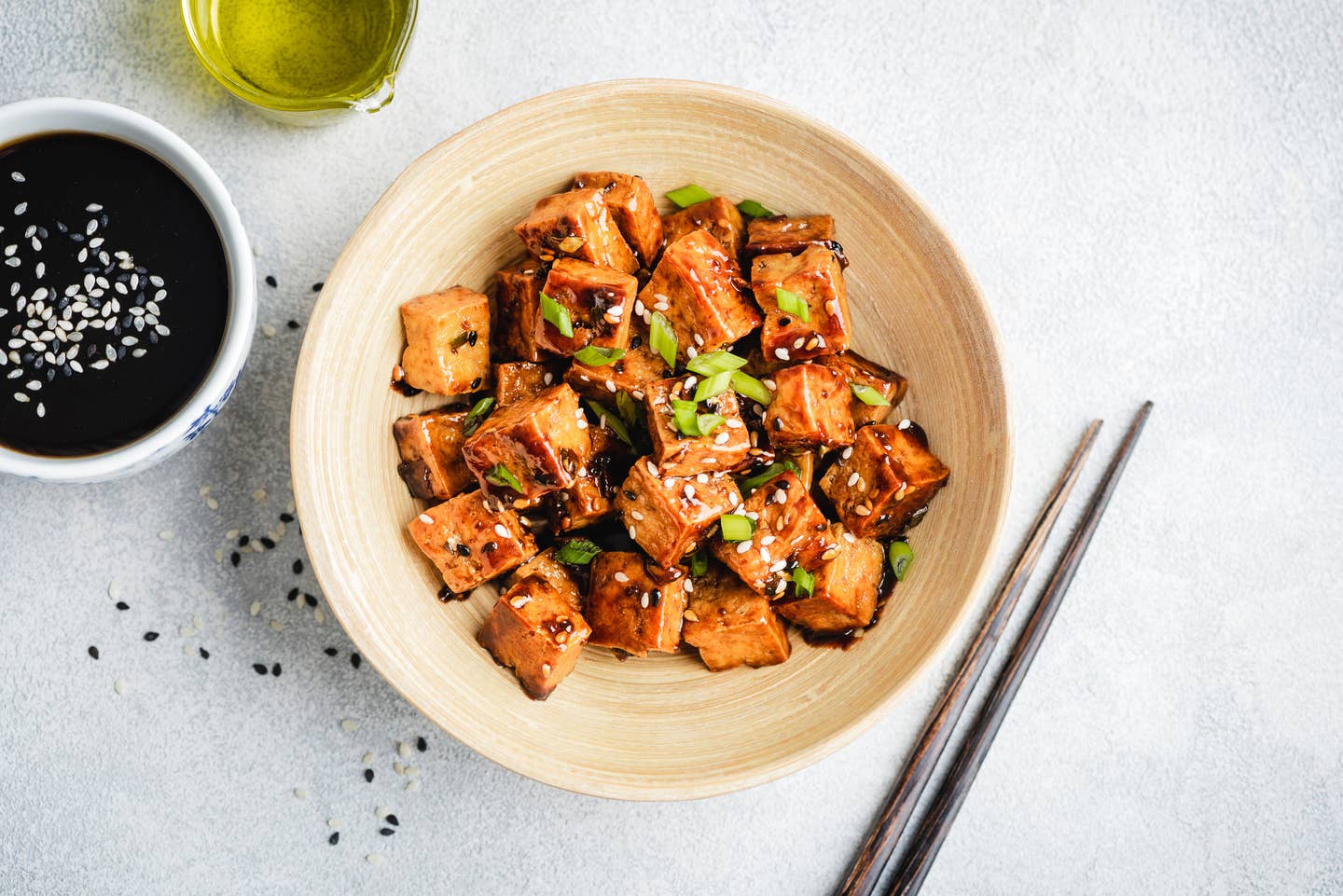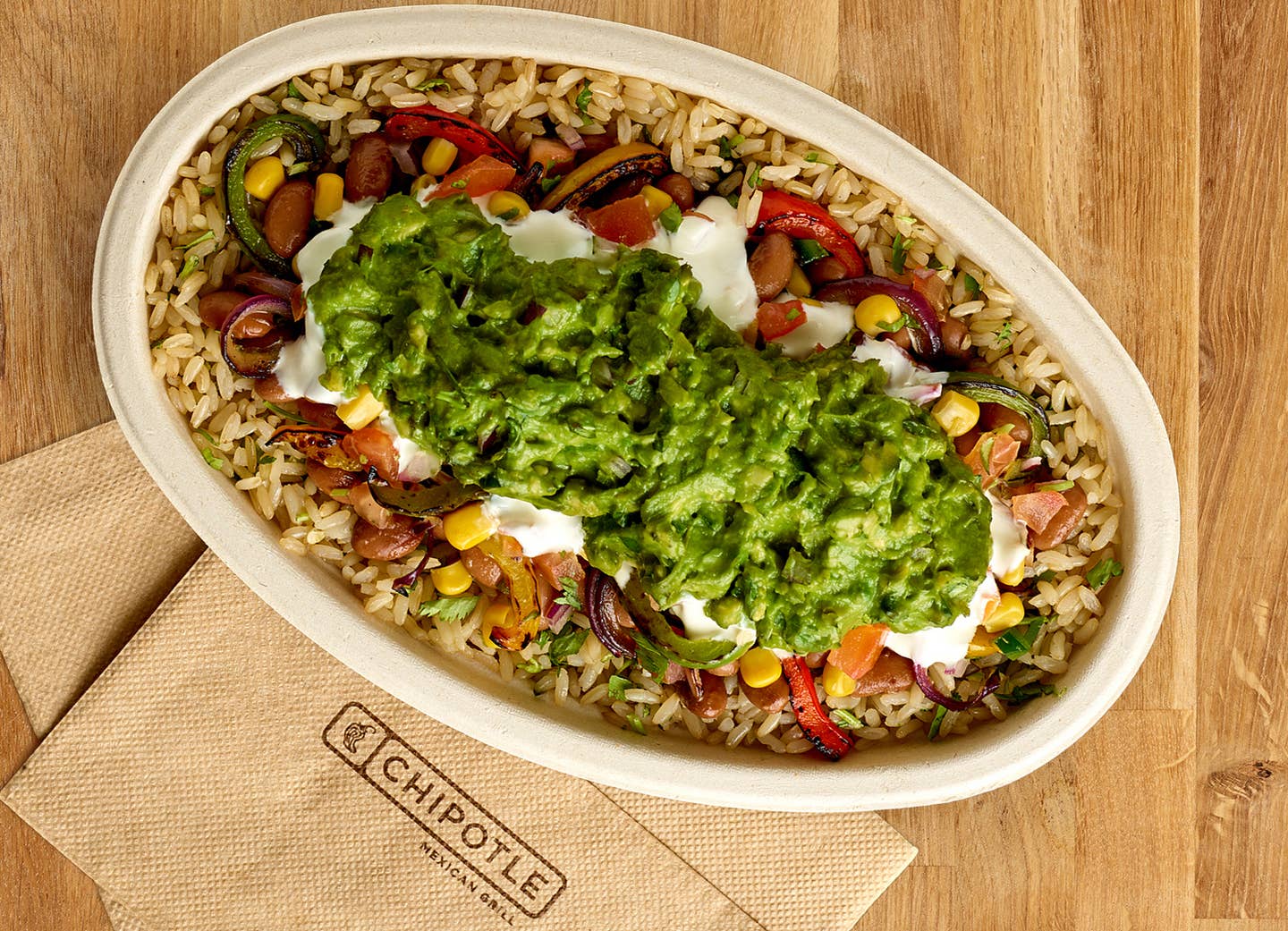
The Surprising Health Benefits of Soy Protein, According to New Research
Approximately 82 million Americans will be eating plant-based meat in 2024, but skepticism remains high about alternative proteins, particularly processed soy. Now, new research refutes the concern that vegan meat made with soy is unhealthy. Working under a partnership between the multinational brand Unilever and Wageningen University in the Netherlands, researchers upheld the nutritional value of soy-based protein sources.
The research team closely examined the nutritional content of soy-based meat products compared to conventional meat, soybeans, and other plant-based meat products. The study proved that using processed soy in vegan meat products does not jeopardize the nutritional value, as published in the journal Frontiers in Nutrition. Before this study, little research had been conducted examining how processing methods impacted nutritional value.
“For the first time, a study comprehensively finds that the protein quality of soy used in our plant-based foods is not compromised during processing, contrary to misconceptions. In fact, processing soy slightly increases the protein’s nutritional quality,” Amelia Jarman, Unilever’s Future Health and Wellness Science and Technology Director said in a statement.
Is Soy Protein Healthy?
To determine the relationship between processing and nutritional value, the researchers evaluated the soy-based protein with the digestibility indispensable amino acid scores (DIAAS), the United Nations Food and Agrilcutre's standard measure. The rubric analyzes protein quality in relation to the body's nutritional requirements and products that score above 75 are considered healthy.
The researchers examined different soy product ingredients to properly assess the nutritional value of soy-based meat. To assess plant-based meat products most accurately, the researchers applied the DIASS rubric to soy protein concentrate, scoring it at 88. The score ranked higher than whole soybeans at 85.
“Given the rising demand from environmentally conscious consumers looking to transition away from meat but still looking for nutritious, high-quality food, this research is very exciting as it proves that meat-free alternatives actually do fulfill our bodies’ protein requirements,” Jarman said.
The analysis reveals that vegan meat made from processed soy can properly meet the standards for protein requirements. The study also noted that soy protein quality could be altered through processing and post-processing techniques.
How is Soy Protein Processed?
Soy-based meat alternatives pioneered the vegan protein market, and more than likely, Americans consuming plant-based meats are eating processed soy. But what do the soy processing methods look like? To produce soy-based protein concentrates, soybeans are cleaned, dehulled, crushed, and flaked. The oils from the soybeans are extracted to eventually create soy protein isolate.
The soy flour, soy isolate, and soy concentrate are further processed to replicate the texture of conventional meat products. These processes can include extrusion –– where protein experience thermomechanical manipulation to create a meat-like texture.
Avoiding Red Meat for Health
This October, researchers concluded that eating less meat lowers the risk of all causes of mortality. The study, published in the JAMA Internal Medicine Journal, found that vegans have a 9 to 12 percent lower mortality rate when compared to meat eaters.
- Eating a mostly plant-based diet can prolong life expectancy by over 10 years.
- Those who eat red and processed meat are at a 13 and 9 percent higher risk of early death, respectively, according to Harvard researchers.
- Choosing plant protein and avoiding meat and dairy protects your gut health and improves your overall well-being, reducing your risk of disease.
Adopting plant-based meat products instead of conventional red and processed meats can significantly reduce disease risks. Processed and red meat products are listed as carcinogens by the CDC, clearly presenting health and longevity risks to Americans who follow the traditional Western Diet.
For more plant-based happenings, visit The Beet's News articles.
Top 10 Sources of Plant-Based Protein According to a Nutritionist
1. Seitan
Protein: 21 grams in ⅓ cup (1 ounce) Seitan isn’t as popular as other proteins, but it should be! Made from wheat gluten, its texture resembles ground meat. It’s often used in pre-made veggie burgers or meatless nuggets. Seitan has a savory taste, like mushrooms or chicken, so it works well in dishes that call for an umami flavor. With a hearty texture, seitan can be the star of practically any vegan main dish. Add it to stir-fries, sandwiches, burritos, burgers, or stews. Like tofu, seitan will take on the flavor of any marinade or sauce.
2. Tempeh
Protein: 16 grams in 3 ounces If you like a protein with a bit of bite, add tempeh to your list. Made from fermented soybeans, tempeh has a slightly nutty flavor and is pressed into a block. Most varieties include some sort of grains, such as barley or millet. Not only is tempeh a plant-based source of protein, but the fermentation process also creates good-for-your-gut probiotics. You can cut tempeh right off the block and use it as the base for a sandwich or pan-fry it with some sauce. Or, crumble, heat, and make it the star of your next taco night.
3. Lentils
Protein: 13 grams in ½ cup cooked Lentils come in multiple varieties--red, yellow, green, brown, black. Regardless of the type lentils are small but mighty nutritional powerhouses. They pack a good amount of protein as well as iron, folate, and fiber. When cooked, brown lentils retain their texture and can be the base for a grain bowl or make a hearty substitute for ground meat in meatballs, lasagna, tacos or Bolognese. Red lentils are a bit softer and make a nice add-in for a hearty soup, chili, or stew.
4. Hemp Seeds
Protein: 10 grams in 3 tablespoons Hemp seeds are a tender and nutty seed, derived from the hemp plant. They contain good amounts of omega-3s, iron, folate, magnesium, phosphorus, and manganese. They are also a solid source of both soluble and insoluble fiber, which helps to keep your digestive tract healthy and humming. Because they pack a double whammy of protein and healthy fats, hemp seeds can help satisfy hunger, preventing those embarrassing stomach growls as you slog your way to your lunch break. Add them to your morning smoothie or sprinkle them on top of yogurt, oatmeal, or even a salad.
5. Tofu
Protein: 9 grams in 3 ounces (⅕ of a block) Made from coagulated soybeans, tofu is the most popular plant-based protein. Soy is one of the only meatless "complete" proteins, meaning that it contains all of the essential amino acids that the body can’t make but needs for muscle and immune function. With 15% of your daily calcium needs, tofu is also a good replacement for dairy.
6. Edamame
Protein: 9 grams of protein in ½ cup This sushi appetizer is a nutrient powerhouse, so eat it anytime. Edamame is really just another name for soybeans in their pods. Let’s list off some stats--a small ½-cup serving of edamame has 9 grams of protein, 15% of your daily vitamin C, 10% of your daily iron and 16% of your daily fiber. Keep a bag of edamame in your freezer to serve as a fun-to-eat side dish or opt for the shelled variety to toss into salads or a grain bowl.
7. Quinoa
Protein: 8 grams per cup (cooked) Quinoa is an ancient grain and since it's gluten-free a great choice for anyone avoiding gluten. Add it to your burger recipe to create filling texture, or instead of meat in your taco or burrito. Quinoa is among the healthiest foods on the planet, delivering phytonutrients that have anti-inflammatory qualities, so keep it in your pantry for any meal that needs a filling grain. Just remember to soak it and rinse before cooking to get rid of any bitter taste.
8. Black Beans
Protein: 7 grams in ½ cup (canned) Eating beans on the regular might as well be a prerequisite for a plant-based diet. Not only are canned black beans inexpensive, but they also contribute 10% of your daily iron and 25% of your daily fiber to your diet. For less than $1 a can, beans can be the star of tacos, quesadillas, salads, soups, burgers, or dips.
9. Amaranth
Protein: 6 grams in ⅔ cup (cooked) Chances are you’ve never cooked amaranth. But you should, since this tiny, gluten- free grain is packed with almost 30% of your daily fiber and 20% of your daily iron. Cook it like a traditional grain to yield a soft, porridge-like texture. Many people add amaranth to other a hot breakfast cereal mixture, like oats and quinoa. It also pops like popcorn. Toss it in a pot with some oil and wait for it to pop up into a nutritious snack.
10. Peas
Protein: 5 grams in ⅔ cup If peas were one of your most hated veggies as a kid, it’s time to give them another chance. These green beans are a great low-calorie protein to keep in your freezer. Sure, they don’t always taste great when steamed or microwaved (who wants to eat mushy, overcooked peas?), but they do blend well into a yummy puree that can be slathered on toast. To amp up the flavor, add some lemon juice or mint to your mix before you blend.
More From The Beet






